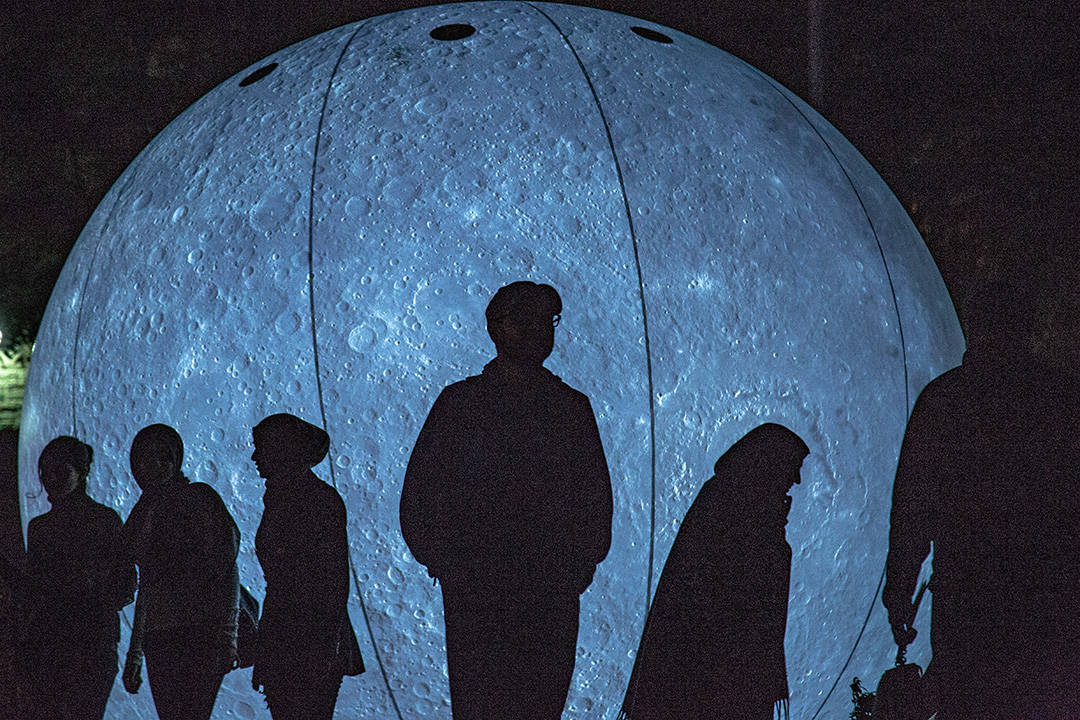“The cosmos is not nerdy; the cosmos is wonderful,” reads a line from my favourite show, The Marvelous Mrs. Maisel, which aptly captures my experience at the Dunlap Institute’s second annual Planet Gazing Party on September 14.
The public event enthralled thousands of Torontonians from different age groups, cultures, and sects of society who spent their Saturday evening learning more about the universe.
I was surprised as we lined around the back campus field, having not anticipated the energy and excitement that was in the air. Attendees included kids dressed as astronauts, U of T students who had just left Robarts Library, middle-aged couples on their weekly date nights, and grandparents accompanying their grandkids.
As the display opened in the evening, the telescopes were set up, the volunteers were ready, the moon globe was lit, and the trivia tables were abuzz. Trying to navigate, I came across a table showcasing small globes of Neptune, Mercury, the Moon, and Mars.
A volunteer from the Royal Astronomical Society of Canada stood behind the globes. He excitedly explained to the kids the significance of the celestial bodies’ names. A question he posed while discussing the origins of these names stuck with me: “Would the names be different, had the Ancient Greeks been more powerful than the Romans?”
This question solidified my belief that educational events like these can engage people from a diverse range of interests and studies, as well as capture the imagination of kids in different ways — ones that can inspire them.
I eventually located the line for a star nebula. After a long wait, we saw a small green glint in the sky: a star seemingly expanding in space, on a journey to explode. This nebula, formed of dust and gas, experienced a beautiful death as we looked on.
After clicking a few pictures with the beautiful Moon globe, I headed to the star attraction of the night — Jupiter. As a giant ball of gas, encased in multiple rings of dense dust particles, this orb was surrounded by its breathtaking Galilean moons: Io, Europa, Ganymede, and Callisto.
The light from the moons was so breathtaking that it became an immediate highlight of my entire experience.
I made the conscious decision not to bombard you with facts in this article. The reason for that is simple: any science enthusiast can look up anything I could tell them. Instead, I tried to capture the marvel I experienced being amongst science enthusiasts and the ever-glorious cosmos.
We forget to appreciate the external and internal beauty of science, its reciprocal influence on culture, and its far reach — transcending any barrier other areas of life may harbour. Experiences like these from the Dunlap Institute are a must for anyone with a curiosity about our universe.


